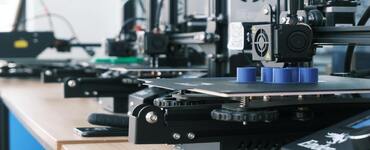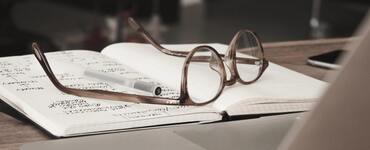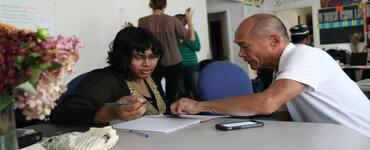Meaningfully integrating project-based learning, language learning, and technology into the classroom provides 21st century skills for the real world. This article describes how one middle school teacher integrated project-based learning, technology, form/function instruction, and formative assessment into a 3D printing unit.
Keywords: 3D printing, Project-based learning, assessment, Project-based language learning, middle school, curriculum design, technology
Introduction
Project-Based Learning (PBL) is a student-centered approach to teaching and learning that can seamlessly blend language learning and technology integration (Beckett & Slater, 2020). With foundations in Dewey’s experiential learning philosophy (1916) and Kilpatrick’s project method (1918), PBL has become a powerful movement in education, benefiting classrooms through student engagement, collaboration, critical thinking, and problem solving, among other positive effects (Buck Institute for Education, 2022). Infusing PBL with language learning, sometimes referred to as Project-Based Language Learning (PBLL), this approach has paved the way for meaningful second and foreign language learning, documented through research, in countries all around the world (Beckett et al., 2020). Combining relevant apps and web-based tools, PB(L)L projects can powerfully shape learning experiences to bring about authentic learning for students (Alharthi et al., 2021).
Beckett and Slater, well-known PBL/PBLL scholars, argue that projects can engage students in deeper learning with and through technology for learning language, content, and other relevant skills (Beckett & Slater, 2017). They have also correctly stated that PBL with intentional technology integration, language form/function instruction, and assessment has also been limited in the PBL research (Beckett & Slater, 2020; Beck et al., 2021). To help fill this gap, this paper describes a 3D printing PB(L)L unit designed for both native and non-native English speaking middle school students in a technology course at a rural school, which was implemented from 2017-2019. It is hoped that this paper not only highlights the potential that creative technology-infused projects can have on learning, but also inspires other teachers to write about the amazing work that they are doing or have done in their classrooms.
Literature Review
3D Printing for Authentic Learning
3D printing has come onto the education scene within the last two decades as a high-tech tool for providing engaging STEM (science, technology, engineering, and math) projects, real world skills, teamwork, experimentation, and problem-solving skills (Lacey, 2010). Intrinsically linked with PBL, multiple affordances of 3D printing in educational contexts have been documented through exciting projects including: a project where kindergarten and first graders designed new playground equipment using 3D printing in the USA (Wendt & Wendt, 2015), an interdisciplinary 3D printing program with middle school students in South Korea (Shim & Lee, 2019), and in facilitating a junior/senior high school service-learning project where students 3D printed hands and arms for amputees through E-NABLE (Enabling the Future, 2022; Suchow, 2016). These exemplary studies show that 3D printing PBL is possible at all grade levels and can integrate meaningful content for students.
In addition to 3D printing PBL research involving students, several 3D printing-related studies have involved pre- and in-service teachers. In a survey of teachers concerning their interest in learning about augmented reality (AR), virtual reality (VR), and 3D printing, Trust et al. (2021) found that most of the teachers, who were enrolled in a MOOC (Massive Open Online Course), described wanting to learn how to use and troubleshoot the devices and fit these tools within their teaching pedagogy. Less than one quarter of the teachers, however, indicated interest in how to integrate these devices within their curriculum (Trust et al., 2021). Mixed results concerning 3D printing curricular integration were similarly found with middle school history teachers (Maloy et al., 2017). Teachers found it difficult to integrate 3D printing into their curriculum, and both teachers and students initially found it difficult to use the Computer-Aided Design (CAD) program Tinkercad. After implementing 3D printing projects in their classes, however, their students found the projects fulfilling and some teachers found value in the projects and in altering the “teacher-as-expert/student-as-novice relationship” (Maloy et al., 2017, p. 244).
In terms of pre-service studies, Novak and Wisdom (2018) highlight a 3D printing project for elementary pre-service teachers in science education where the projects significantly reduced the teachers’ anxiety about teaching science and improved their science interest and perceived competency in K-3 science standards. Moreover, Verner and Merksamer (2015) present a program in which they used the create-design-implement-operate (CDIO) approach to teach pre-service technology teachers and other science and engineering majors about teaching design and manufacturing. These studies with pre-service teachers suggest that future in-service teachers may enter schools with more 3D printing readiness.
3D Printing PBLL for Second and Foreign Language Learning
While less research has been done on 3D printing PBLL in second and foreign language contexts, researchers at the college level have demonstrated its effectiveness. 3D printing PBLL can be seen in a course for international second language graduate students in Japan (Roy, 2017), in an introductory college German class in the USA (Emm & Hawkins, 2020), and in a 3rd year college Russian course in the USA (Enkin et al., 2021). In a research study surrounding a 3D printing course at a 7th-12th grade summer STEM camp, some participants hailed from Italy and the American participants were of diverse ethnic backgrounds, suggesting that language learners might have been involved in the study (Kwon, 2017). Since L1s were not collected, however, second/foreign language learning implications for language learners were not explored. Similar to how the first author (Beck) had only presented on 3D printing in her middle school English language (EL) and technology classroom at conferences and within professional learning communities (i.e., Beck, 2018, 2019), it is very possible that innovative 3D printing work is being done in language classrooms, however, this information is not reaching research communities.
Integrating 3D Printing into the Middle School EL and Technology Curriculum
With the many benefits espoused by PBL research, the first author’s goal was to bring these learning experiences to her classroom. As a half time EL/half time technology teacher at a rural Missouri middle school from 2017-2019, she had the unique opportunity to design the school’s new technology curriculum and develop content for the EL classes. The middle school, a Title I school with approximately 10% ELs, had recently gone 1:1 with Chromebooks and was aiming to expand their students’ 21st century skills. Equipped with a new 3D printer, the teacher was encouraged by administrators to create 3D printing projects for the diverse student body. Designing a CAD and 3D printing unit with both nonnative ELs and native English speaking students in mind, the unit introduced activities that taught or reinforced language learning and were formatively assessed in creative ways.
3D Printing Unit Overview
The 3D printing unit was designed as a two-week unit for the middle school technology course. Created as a service-learning unit, the unit began with the goal of making 3D printed objects to help others. The first part of the unit introduced relevant vocabulary and the real world applications of 3D printers, as well as provided a refresher on the metric system. To aid in CAD design, TinkerCAD was used in the classroom, including its tutorials as well as guided CAD design practice activities structured by the teacher. At the same time, a survey was sent to teachers and school staff in the district to ask what classroom materials or objects they could use for their classrooms or workspaces that could be 3D printed. Through the Google Form, staff members would select an object they could use for their classroom (e.g., pencil holder, name plate, Post-It Note holder, magnet, keychain), it’s shape (e.g., rectangular, oval, hexagonal), color, and if they would like any specific text or images on their object.
Constraining the project to include requests from teachers/staff members was born out of necessity. In the first iteration of this project no such restrictions were made, which resulted in a few projects that were not quite useful or were unprintable (at least, with the teacher’s level of 3D printing knowledge). Given the amount of time it takes to print a 3D object and how much students want to see their design printed, implementing a student-created Google form in the second iteration of the project onward that narrowed the scope of what students could design proved to be a win-win. While this may seem limiting, students still had many design choices to make as a team. For instance, a teacher might request a blue hexagonal-shaped pencil holder with their name and school logo on it; for this, students would need to decide what dimensions to make the pencil holder, how thick or thin to make the base or the walls of the pencil holder, which font to make the text, where to effectively place the text and school logo, which school logo to use, whether to embed the text/logo so that it looked etched into the surface or have it protrude out, and if there were any value-added design elements the group wanted to add (e.g., adding patterns or borders to the edges of the object).
During the second week, the survey results from the school staff were analyzed and teams of 2-3 were created and drew a conceptual design of what they would be making, spending several days working on the design together. At the end of the two weeks, the 3D designs were submitted to the teacher and the focus shifted to writing a short reflection paper about the project. The reflection writing activity was completed in Google Drawings, where a screenshot of the completed CAD design could be embedded. The reflections and completed 3D prints were placed on display in the middle school trophy cabinets before being given to the school staff members who requested them. In total, this unit was delivered 16 times by the teacher over the course of the two years at the middle school building.
Integrating Form/Function and Assessment
Integrating academic English and the language of technology was important in designing the PBL unit. Specific instruction on language form and function has been described as lacking in PBL research, which can be seen as a missed opportunity for learners (Beckett & Slater, 2020). While it might seem incompatible with a PBL activity at first glance, intentionally integrating form and function can be done in multiple parts of the unit in less intrusive ways through activities that introduce students to vocabulary and grammar (form) and what can be done with language (function), e.g., requesting information, describing processes, or drawing conclusions.
While designing the 3D printing unit, focus was placed on introducing and practicing the new vocabulary and concepts related to 3D printing in both speaking and writing. New words and phrases including filament, CAD program, and SVG image would need to be introduced, modeled and practiced. Moreover, EL students can particularly need additional support with prepositional phrases and direction-related words, for example, telling a classmate when designing a keychain to, “Put the text on top of the rectangular shape” or “Cut a hole out of the rectangle using a cylindrical shape.”
To practice CAD and 3D printer-related language, the teacher developed a 3D printing hyperdoc, an interactive worksheet with links to different websites and videos related to 3D printing. By reading the text, looking at images, and watching short videos online, new words and concepts were introduced and reinforced organically. The hyperdoc activity was modeled by the teacher and completed with a shoulder partner, in which ELs and non-ELs could be grouped together to support each other while completing the activity. As such, the hyperdoc was a simple yet useful formative assessment in the early stages of the unit.
New concepts were also reinforced with a short video on 3D printers that used the same new language and other worksheets. Before watching the video, students were asked to pay attention to specific parts of the video, and then had time to think-pair-share after the video before discussing the answers as a whole class. Additionally, a worksheet on measuring in centimeters and millimeters (Super Teacher Worksheets, 2022) was adopted for practicing the metric system, helping reinforce mathematical principles useful in CAD. The worksheet, the only physical paper used in the entire 9-week course, helped students review centimeter and millimeter measurement by using rulers and measuring objects in the classroom.
Within the 3D design process itself, language form and function were reinforced through focus on the designs that teams were tasked with making as well as the survey that they sent to the teachers. As survey responses were of varying degrees of specificity and clarity, they needed to be read, comprehended, and interpreted so that the staff member’s wishes were honored. Moreover, many of the staff members requested objects with text on them, such as the staff member’s name or famous teacher quotes. While English errors are a part of learning for both native and non-native speakers, it was important that any errors be corrected before printing as reprinting a 3D print would cost multiple hours and waste materials.
The 3D prints themselves were assessed by the teacher in terms of the object’s printability, feasibility of being printed in a timely and resource-friendly manner, and the extent to which students honored the requests of the teachers/staff who requested the print. The rubric categories were: theme (whether the students took the request seriously and created a purposeful object), color scheme (whether students used only 1-3 colors and only the filament colors that were currently available), size (limited to 8cm in height, 2-3mm thickness to reduce print time), detail (adding text, textures, images, etc.), and teamwork. Issues such as text floating in space were accounted for in the “theme” category as these errors, which were routinely checked for during the project-making process, would result in 3D printing errors.
Finally, reflective writing is an important aspect of project work, as the writer can be led to personal discovery and deeper meaning (Rocha, 2006). To integrate technology into the writing process and increase its accessibility, the teacher created a graphic organizer in Google Drawings with four quadrants with questions to answer, plus a space to add a screenshot of the 3D design. The rubric evaluated the amount of information shared, the quality of information shared, and minimal English errors. Displaying the reflection writing next to the 3D prints in the trophy case at school provided students, staff, and visitors a glimpse into the design process.
As a result, these reflections and 3D prints not only provided an assessment for technology-infused PB(L)L (Chen & Hirsch, 2020), but showed evidence of acquisition of technology-related vocabulary and concepts. The prints and write-ups also aided the teams in practicing how to discuss the design process with the 3D print recipients. As a teacher, seeing the students give the printed object to the recipient and explain how they designed it was the most rewarding part of the experience, and the staff and students seemed to enjoy it a lot too.
Conclusion
Authentic technology-infused PB(L)L units can meaningfully combine language, content, and 21st century skills, which can be measured consistently through formative assessment. After running the unit several times, by popular demand, the teacher expanded to create a specific 3D printing PBL unit for English learners who had taken the technology course and wanted to improve their skills further, as well as a before school mini-3D printing course for students who could not enroll in the technology course due to scheduling conflicts. Combined with community coverage from the local newspaper and school awards given for best in 3D design, these units had a great impact on the school, shining a light on the affordances of technology and exciting innovations and careers in STEM.
References
Alharthi, A., Beck, J., Bordbarjavidi, F., Gale, J., Garib, A., Guskaroska, A., Kurt, S., Lestari, F., & Zawadzki, Z. (2021). Effective applications and web-based tools for increasing student engagement in project-based language learning. MIDTESOL Journal, 4. https://midtesol.org/wp-content/uploads/2021/12/5-Effective-Apps-and-Web-based-Tools-for-PBLL-V2.pdf
Beck, J. (2018, Sept.). 3D Printing and designing in the ESL classroom [conference presentation]. MIDTESOL 2018, Kansas City, MO, USA.
Beck, J. (2019, Mar.). Embedding STEM in the ESL classroom through 3D design and printing in Tinkercad [conference presentation]. TESOL International Convention, Atlanta, GA, USA.
Beck, J., Beckett, G. H., Bordbarjavidi, F., Garib, A., Guskaroska, A., Sollier, N., Yang, J. & Zawadzki, Z. (2021, Aug.). Maximizing technology use in project based learning: Looking back and moving forward [conference presentation]. EUROCALL 2021.
Beckett, G. H., & Slater, T. (2017, Mar.). A synthesis of project-based language learning: Research-based teaching ideas [conference presentation]. TESOL International Convention, Seattle, WA, USA.
Beckett, G. H., & Slater, T. (Eds.) (2020). Global perspectives on project-based language learning, teaching, and assessment: Key approaches, technology tools, and frameworks. Routledge.
Beckett, G. H., Beck, J., Chen, M., & Guhin, J. (2020, Oct.). Empowerment with project-based language teaching and research [conference presentation]. TESOL Arabia 2020, Online.
Buck Institute for Education. (2022). PBL Works. https://www.pblworks.org/
Chen, M., & Hirsch, R. (2020). A research-based framework for assessing technology-infused PBLL. In G. H. Beckett & T. Slater (Eds.), Global perspectives on project-based language learning, teaching, and assessment: Key approaches, technology tools, and frameworks (pp. 224-243). Routledge.
Dewey, J. (1916). Democracy and education. Project Gutenberg. https://www.gutenberg.org/files/852/852-h/852-h.htm
Emm, A., & Hawkins, D. (2020). From bauhaus to makerspace: Meaning design and computer-aided design in introductory German. Die Unterrichtspraxis/Teaching German, 53(2), 138-150. https://doi.org/10.1111/tger.12133
Enabling the Future. (2022). E-NABLE. http://enablingthefuture.org/
Enkin, E., Tytarenko, O., & Kirschling, E. (2021). Integrating and assessing the use of “Makespace” in a Russian cultural studies course: Utilizing immersive virtual reality and 3D printing for Project-Based Learning. CALICO Journal, 38(1), 103-127. https://doi.org/10.1558/cj.40926
Kilpatrick, W. H. (1918) The project method: The use of the purposeful act in the education process. Teachers College Record, 19(4), 319-335.
Kwon, H. (2017). Effects of 3D printing and design software on students’ overall performance. Journal of STEM Education, 18(4), 37-42.
Lacey, G. (2010). 3D printing brings designs to life. Tech Directions, 70(2), 17-19.
Maloy, R., Trust, T., Kommers, S., Malinowski, A., & LaRoche, I. (2017). 3D modeling and printing in history/social studies classrooms: Initial lessons and insights. Contemporary Issues in Technology and Teacher Education, 17(2), 229-249.
Novak, E., & Wisdom, S. (2018). Effects of 3D printing project-based learning on preservice elementary teachers’ science attitudes, science content knowledge, and anxiety about teaching science. Journal of Science Education and Technology, 27, 412-432. https://doi.org/10.1007/s10956-018-9733-5
Rocha, A. G. (2006). The reflective essay. In S. L. Pasqarelli (Ed.), Teaching writing genres across the curriculum (pp. 91-103). Information Age Publishing.
Roy, D. (2017). Developing a Project-Based CALL environment with technical communication in an exploratory 3D printing context. International Journal of Computer-Assisted Language Learning and Teaching, 7(2), 75-101. https://doi.org/10.4018/IJCALLT.2017040105
Shim, H. Y., & Lee, H. E. (2019). Multi-converging educational program for design with the usage of 3D printer: Targeted for middle school students. Archives of Design Research, 32(1), 75-87. https://doi.org/10.15187/adr.2019.02.32.1.75
Suchow, R. (2016). 3D printing & service learning: Social manufacturing as a vehicle for developing social awareness. Journal of Catholic Education, 20(1), 292-300.
Super teacher worksheets. (2022). Metric measurement worksheets: cm and mm. https://www.superteacherworksheets.com/measure-cm-mm.html
Trust, T., Woodruff, N., Checrallah, M., & Whalen, J. (2021). Educators’ interests, prior knowledge and questions regarding augmented reality, virtual reality and 3D printing and modeling. TechTrends, 65(4), 548-561.
Verner, I., & Merksamer, A. (2015). Digital design and 3D printing in technology teacher education. Procedia CIRP, 36, 182-186. https://doi.org/10.1016/j.procir.2015.08.041
Wendt, S., & Wendt, J. (2015) Printing the playground: Early childhood students design a piece of playground equipment using 3-D printing technology. Science and Children, 52(5), 43-47.






